Log in or create new account to save this product to your wishlist.
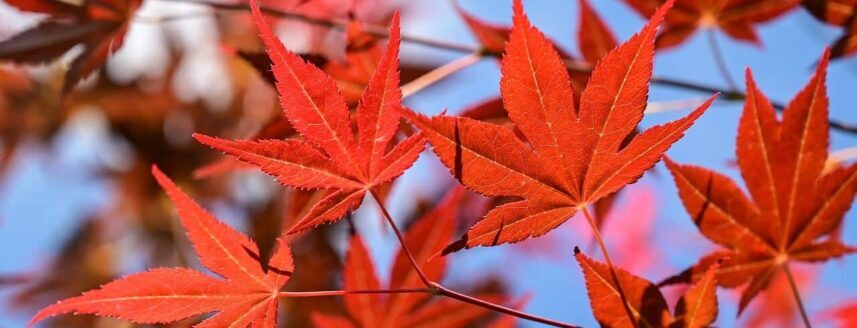
How to Care for A Japanese Maple (Acer Palmatum)
Learn the best techniques for caring for your Japanese maple tree. Discover tips for watering, fertilising, pruning and more.
🌱 All important maintenance moments for your lawn during the year. Leave your email and we will send you the lawn calendar for free.
Enter your email
Receive the lawn calendar in the mail
Enjoy a green lawn all year round!

- Order by 2PM = shipped today
- 250.000+ satisfied customers!
- 60 day satisfaction guarantee
The Japanese maple is a stunning tree, boasting striking bright red leaves in autumn. With its beautiful foliage and graceful form, this tree brings a touch of Oriental charm to your garden. In this article, we’ll delve into everything you need to know to keep your Japanese maple healthy and beautiful. We’ll also discuss ideal growing conditions, offer planting and repotting advice, and explain how to propagate the tree.
- About the Japanese maple
- Types of Japanese maple
- The ideal location for Japanese maple trees
- Caring for a maple tree
- Planting and repotting
- Propagating Japanese maple
- Japanese maple diseases
- FAQ about Acer palmatum care
- Ready to dote on your Japanese maple?
About the Japanese maple
The Japanese maple is a versatile and attractive small tree or shrub that can also be grown as a potted plant. This deciduous, woody shrub originates from parts of Asia and Russia and belongs to the soapberry family (Sapindaceae).
The Japanese maple is also known as Acer palmatum. Deeply cut leaves and stunning colours are characteristic of this pretty eye-catcher. The Acer japonicum is another variety of Japanese maple. It’s slightly less popular in British gardens, likely due to its impressive height of 10 metres (the Acer palmatum only grows to about 5 metres). In this article, we’ll focus mainly on the more compact Acer palmatum.
Leaf shapes and colours
The Japanese maple’s hand-shaped leaves are lobed, with the depth of the lobes varying from about half to almost the entire leaf base. The Japanese maple is a popular choice for gardens due to its beautiful seasonal colours. In spring, the leaves emerge in a fresh, light green colour before darkening in summer.
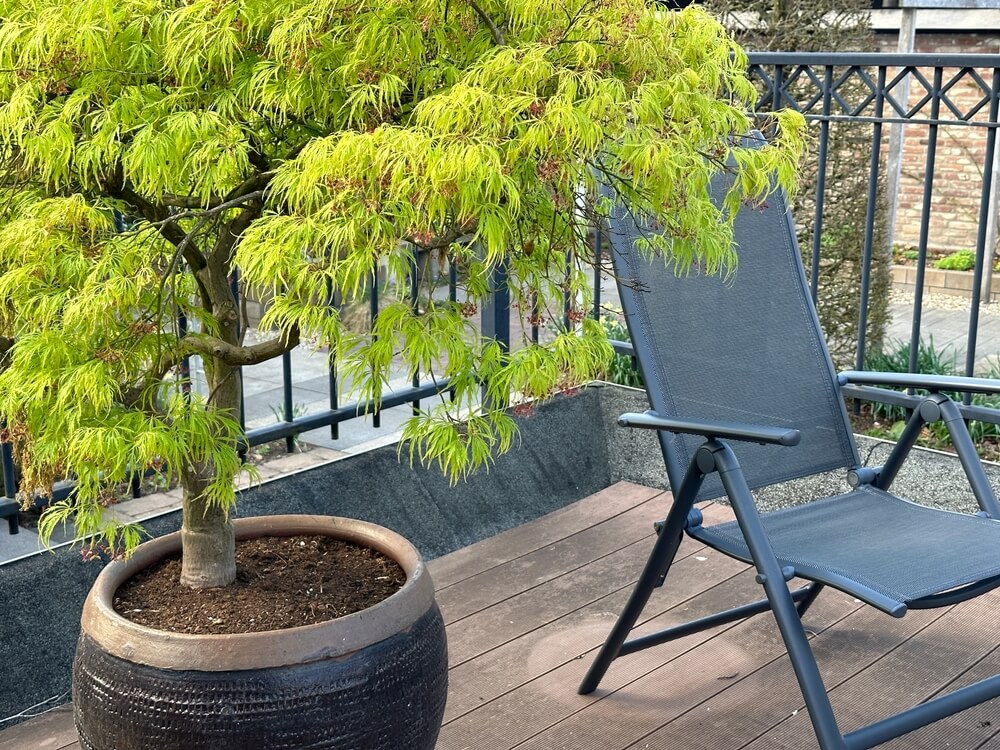
Leaf colour can range from greenish-yellow to purple-red, depending on the cultivar. In autumn, the foliage transforms into stunning shades of yellow, orange, and red (the Indian Summer). Some varieties, like the ‘Bloodgood’, maintain dark red leaves year-round.
Growth Rate and Height
Japanese maples are known for their slow growth. It can take years for them to reach their full potential. Most cultivars stay relatively small, but some can grow into multi-stemmed trees 5–10 metres tall. For smaller gardens or patios, compact varieties are available that won’t exceed 1.5 to 2 metres in height.
Types of Japanese maple
The Acer palmatum is a versatile plant that comes in various shapes and sizes, offering a suitable option for every garden. Broadly, we distinguish these types:
- Upright varieties: These grow in a vase-shaped or upright structure.
- Spreading varieties: These have a more expansive growth pattern.
- Dwarf varieties: While you can choose to keep your Japanese maple small, it’s easier to select a naturally smaller variety. For smaller gardens or containers, compact varieties are available.
Popular Japanese maple tree species
There are hundreds of cultivars of this maple, each with unique characteristics. Here are some popular types:
-
Bloodgood
Dark red leaves all year round, grows to 3–4 metres tall.
-
Acer palmatum orange dream
This beauty offers a true colour spectacle: yellow-orange leaves in spring and autumn, fresh lime-green foliage in summer. This cultivar reaches about 3 metres in height and bears red flowers in spring
-
Acer palmatum dissectum
Bright-green leaves that turn yellow-orange in autumn
-
Acer palmatum garnet
This variety has dark purple-red leaves with spectacular autumn colours and grows in a broad shrub-like form.
The ideal location for Japanese maple trees
Light conditions
Japanese maples thrive best in partial to light shade. While the tree needs some protection from harsh midday sun, it’s crucial to provide enough light. Most cultivars don’t fancy full sun, as the leaves can quickly scorch.
Soil Requirements
Japanese maples prefer well-draining, moist soil rich in organic matter. A slightly acidic soil is ideal for these trees. You may plant the Acer palmatum in almost any soil type, except for waterlogged ground.
For best results, opt for sandy, slightly acidic soil. If you have clay or calcareous (alkaline) soil, it’s important to improve the soil condition.
Shelter
It’s advisable to plant your Japanese maple in a sheltered spot, protected from the wind. Shelter from easterly winds is particularly critical to protect the beautiful foliage.
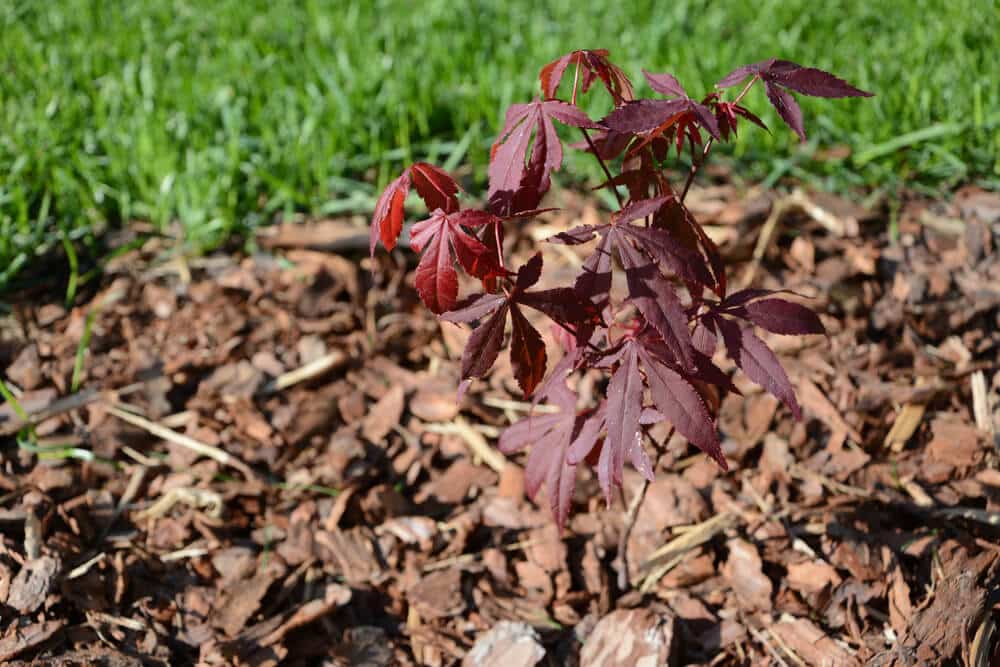
Caring for a maple tree
Watering
Japanese maples need regular watering, especially during dry spells. Keep the soil evenly moist, but avoid overwatering to prevent root rot. In summer, it’s crucial to keep the root ball consistently damp, particularly on hot days.
Be more cautious with watering in winter. For outdoor trees, keep them dry to prevent frost damage.
Feeding your Japanese maple
Feed your Japanese maple annually in early spring with a balanced, slow-release fertiliser to promote healthy growth. After the first year, it’s good practice to add some garden compost each spring.
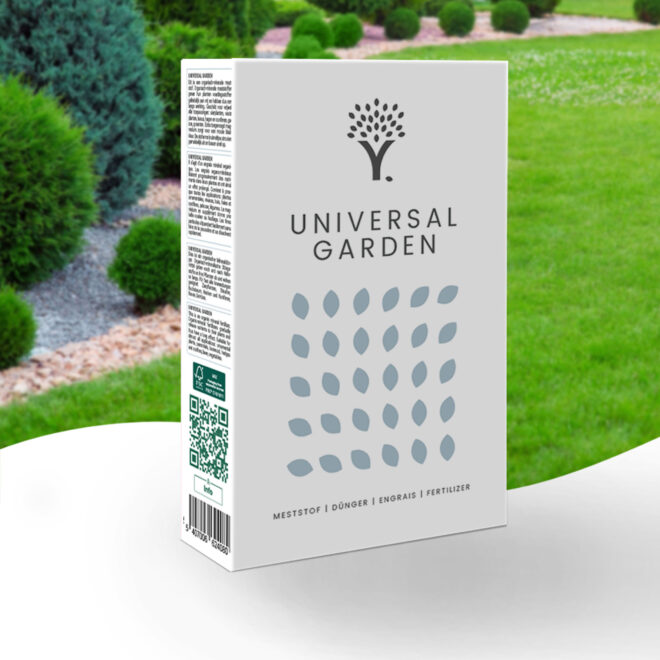
- Balanced formula that benefits all greenery
- Supports the growth of beautiful Japanese maple leaves
- Suitable for organic farming
Pruning your Maple
While Japanese maples grow slowly and need little pruning, you might occasionally need to remove dead or ‘stray’ branches. But when is the best time to prune your Japanese maple? The ideal period is between August and December.
Never prune your Japanese maple in early spring, as this can disrupt sap flow. Remove at most a quarter of the oldest side branches and a third of the thinnest branches from the crown. Prune carefully to maintain the tree’s natural shape.
Winter protection
It’s also wise to protect the plant from severe frost in winter. A layer of mulch around the tree’s base can help stabilise temperature and protect the plant.
Japanese maples are generally winter-hardy (frost-resistant), but they do need protection against wet conditions in winter.
Potted Japanese maple needs extra protection during severe frost. You can wrap the pot or add insulation material to the inside. This also keeps the roots cooler in summer.
Most Japanese trees aren’t evergreen, by the way. Want to ensure a bit of colour in your garden during winter? Then check out our top 10 evergreen shrubs here.
Planting and repotting
Best planting time
You can plant the acer tree all year round, as long as it’s not freezing. However, the ideal time is from late spring to midsummer. This gives the plant enough time to establish before the weather cools. Want to move your Japanese maple? Do this from February to April, when the branches are still leafless.
Be careful when transplanting an older acer tree. The chances of them taking root again decrease if they’ve been in one spot for a long time.
Acer palmatum planting instructions
Dig a hole twice as wide as the root ball and just as deep. Then mix fertilised garden soil into the ground. Place the Acer palmatum in the hole, leaving enough space between other plants. Fill with soil and gently press down. Finally, water the plant generously.
Repotting maple
- Repot every two to three years in spring.
- Choose a slightly larger pot with drainage holes.
- Use a mixture of potting soil and sand or clay pebbles for good permeability.
- Place a layer of lava stones at the bottom for extra drainage.
- Preferably use rainwater and never let the soil dry out completely.
Propagating Japanese maple
You can propagate Japanese maples in several ways. Here are the most common methods:
Sowing Acer palmatum
You can collect maple seeds from Japanese maples or wait for them to grow naturally under the parent tree. Once the seedlings have their first true leaves, carefully dig them up. Pop them in a small pot, water them, and shield them from harsh sunlight. Keep the soil moist, but make sure it never gets waterlogged.
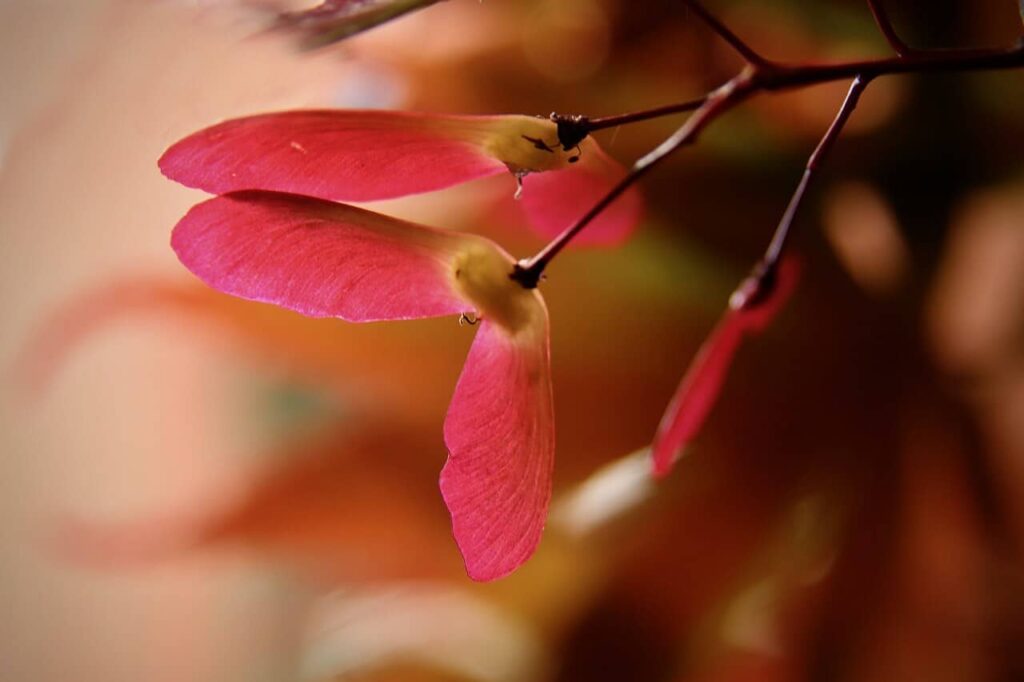
Propagating Japanese maple cuttings
Taking cuttings is another way to multiply Japanese maples. In spring, select new, flexible shoots with numerous Japanese maple leaf pairs. Cut the branch at an angle just below a leaf pair and remove the lower leaves.
Place the cuttings in a mix of sand and peat moss, keeping them moist in a shady spot. Bear in mind it’ll take a while before you have a small shrub. Grafted shrubs grow a bit faster than those from cuttings.
Grafting
Grafting is an advanced technique for propagating Japanese maples. It involves attaching a ‘cutting’ — the scion, to a rootstock. This combines the desired traits of the scion with the rootstock’s vigour. There are various grafting methods, such as whip grafting, cleft grafting, and crown grafting.
Japanese maple diseases
While Japanese maples aren’t fussy plants, but they are prone to certain diseases.
Leaf problems
Acer palmatum can suffer from various leaf issues. A common ailment is wilt disease, which particularly affects Acer palmatum ‘Dissectum’. If your Japanese maple leaves are shrivelled, it’s a sign to take seriously. You can spot branch wilt by brown, wilted leaves and shrivelled branches. Remove the affected parts.
Aphids
Aphids are a common problem for Japanese maples. To tackle aphids, it’s best to remove the affected parts. Learn more about controlling and preventing aphids here.
Powdery mildew
Powdery mildew is a fungal disease that can impact Japanese maples. You’ll spot it as white patches or fuzz on the leaves. This fungus draws moisture from the leaves, causing discolouration and curling. In severe cases, leaves may die off. Read more about identifying and treating powdery mildew.
Prevention and treatment
To ward off issues and diseases in your Japanese maple, we suggest removing dead branches to boost air circulation. Check your maple regularly for early symptoms and ensure good soil quality, moisture, and adequate light exposure.
FAQ about Acer palmatum care
Japanese maples dislike cold feet. In summer, keep the soil consistently moist, but avoid overwatering to prevent root rot.
No, it’s crucial to avoid exposing the tree to intense sunlight, as this can burn the leaves.
For Acer palmatum, a universal garden fertiliser (or one for shrubs) works well. As Japanese maples prefer acidic soil, so you can also use fertiliser for hydrangeas or rhododendrons.
Ready to dote on your Japanese maple?
The Japanese maple, with its stunning leaves and graceful form, offers a versatile upgrade for your garden. By paying proper attention to its light requirements, soil needs, and shelter, you’ll fully enjoy the beauty of your Acer palmatum.
If you have more pretty trees in your garden, you might want to take a look at our articles about frangipani, catalpa, or magnolia trees. Do you have any tips of your own for caring for Japanese maples? Please let us know in a comment below!
Happy gardening!
-
Orchids: A Complete Guide on How to Care for ThemWant to give your orchid the best possible care? Discover essential tips from placement to watering and pruning. Learn everything you need to know!Read more
-
Growing Wisteria Made Simple: From Planting to Perfect BloomsWith blossoms like a purple waterfall, Wisteria sets an almost magical and colourful mood. If you want to grow this beauty in your garden, you’ll need a bit of patience. Don’t worry, it will most definitely pay off.Read more
-
How to Build a DIY Greenhouse: A Practical Guide for Smart SpendersImagine extending your growing season throughout the year, nurturing tender plants regardless of the weather, and creating a personal garden sanctuary. This is precisely what a DIY greenhouse offers you. Let’s learn how to build one.Read more
-
How to Grow Eucalyptus in British GardensWith a little love and care, eucalyptus trees can thrive in English gardens. Since they don’t germinate well without proper help, there are not considered invasive. So, there is no reason not to plant them if you enjoy their looks.Read more
-
Transform Your Garden with All-Year-Round Flowering PlantsDid you know you can enjoy blooming flowers even in January? With the right selection of all year round plants, there’s no need to wait until spring to add some colour to your garden.Read more
-
How to Create a Butterfly Garden: A Simple Guide for British GardensThe UK's butterfly population includes 59 different species. These beautiful winged creatures face a steady decline because of habitat loss, pollution and changing weather patterns. Your garden can become a vital link between nature reserves and natural habitats. Let’s explore how.Read more
-
Volcanic Rock Dust for Your Garden—Application and TipsDid you know that volcanic rock dust is a brilliant organic soil improver? This article explains exactly what it's good for and how to use it properly.Read more
-
How to Use Landscape Fabric ProperlyIf weeds or erosion in your garden are troubling you, landscape fabric might be the solution. We’ll explain how and when to use it properly, just keep on reading.Read more
Leave a comment
Your answer will be displayed on the site and the interested party will be notified by email.
Leave a comment
Have a question or want to share your experience? Leave us a comment.

- Order by 2PM = shipped today
- 250.000+ satisfied customers!
- 60 day satisfaction guarantee

- Order by 2PM = shipped today
- 250.000+ satisfied customers!
- 60 day satisfaction guarantee

🌱 All important maintenance moments for your lawn during the year. Leave your email and we will send you the lawn calendar for free.
Enter your email
Receive the lawn calendar in the mail
Enjoy a green lawn all year round!



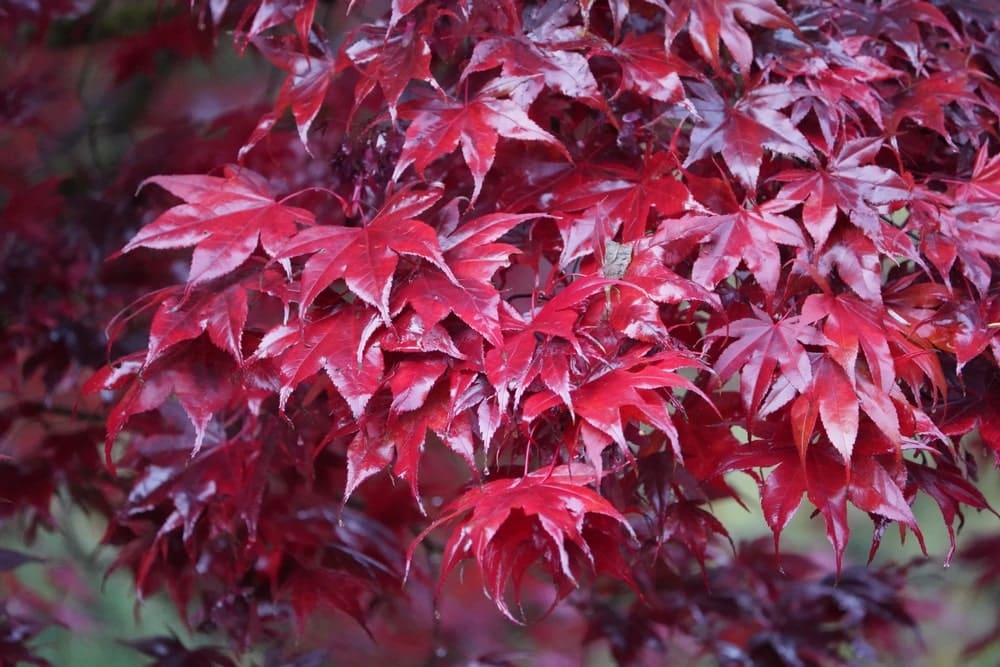

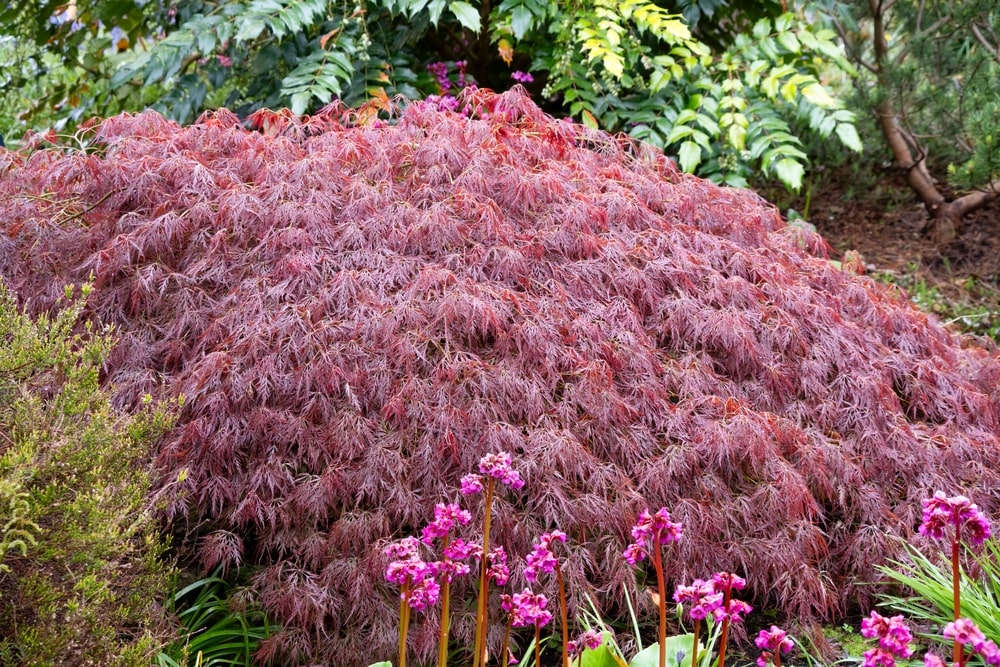




















Comments (0)
There are no comments yet. Well then, what are you waiting for to
Be the first to write your comment!inaugurate this pretty page?
Do you have some comments?